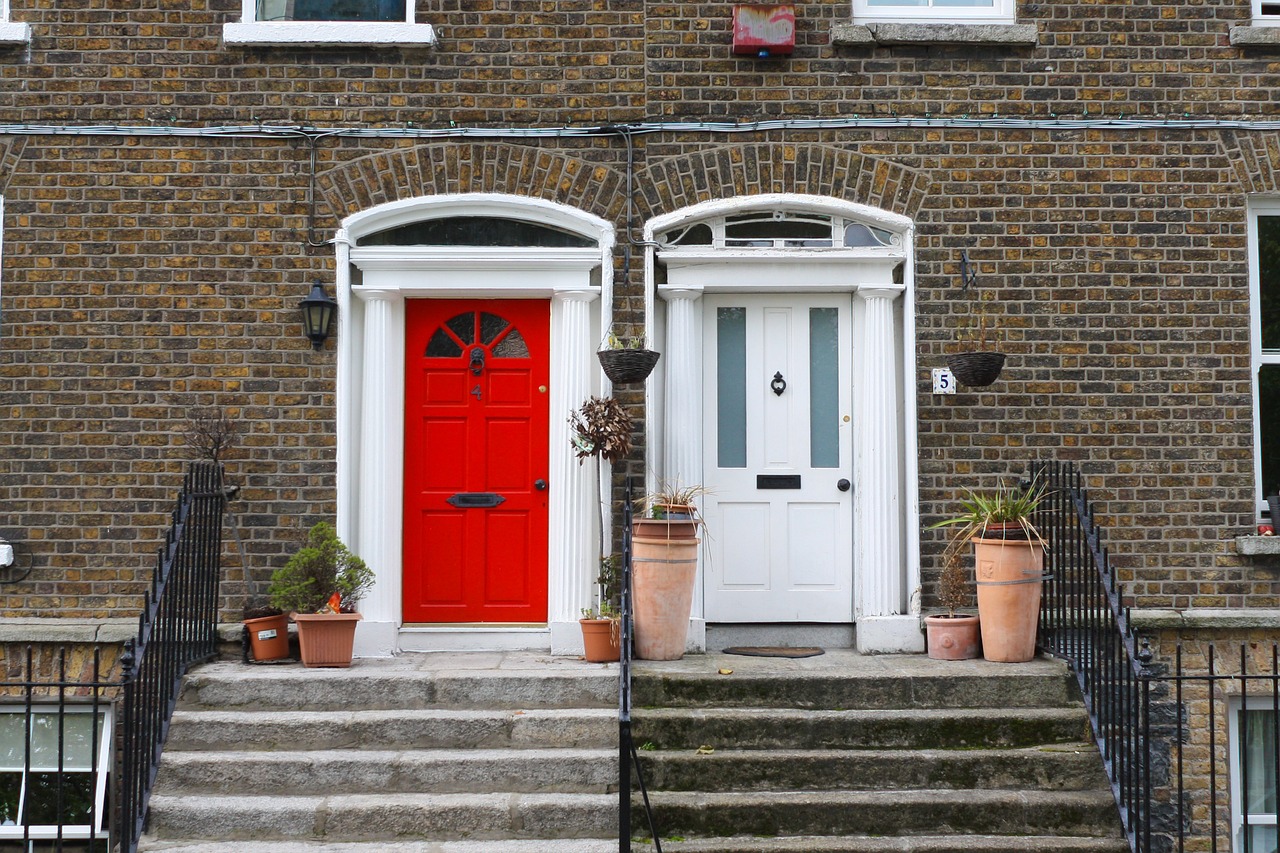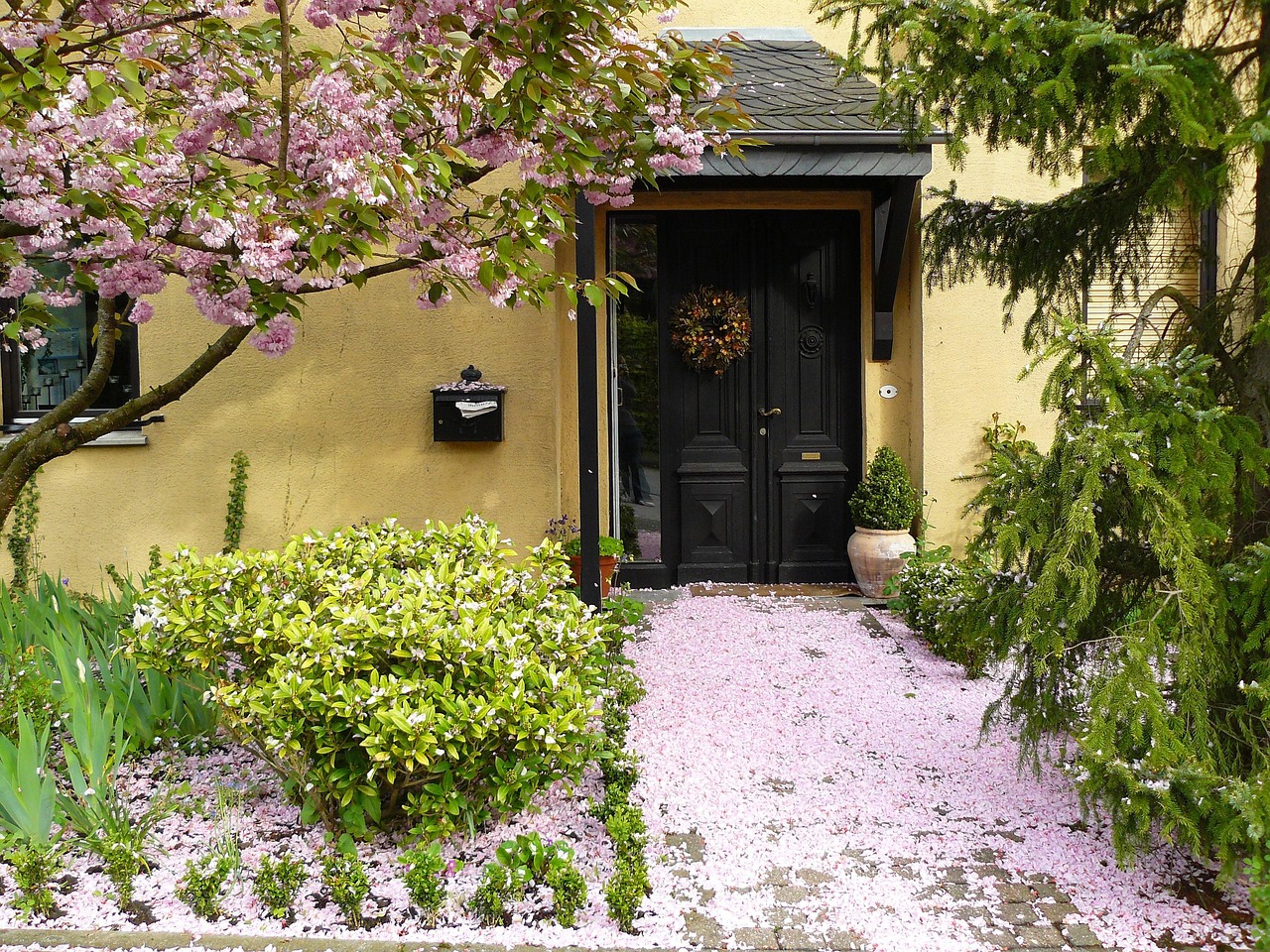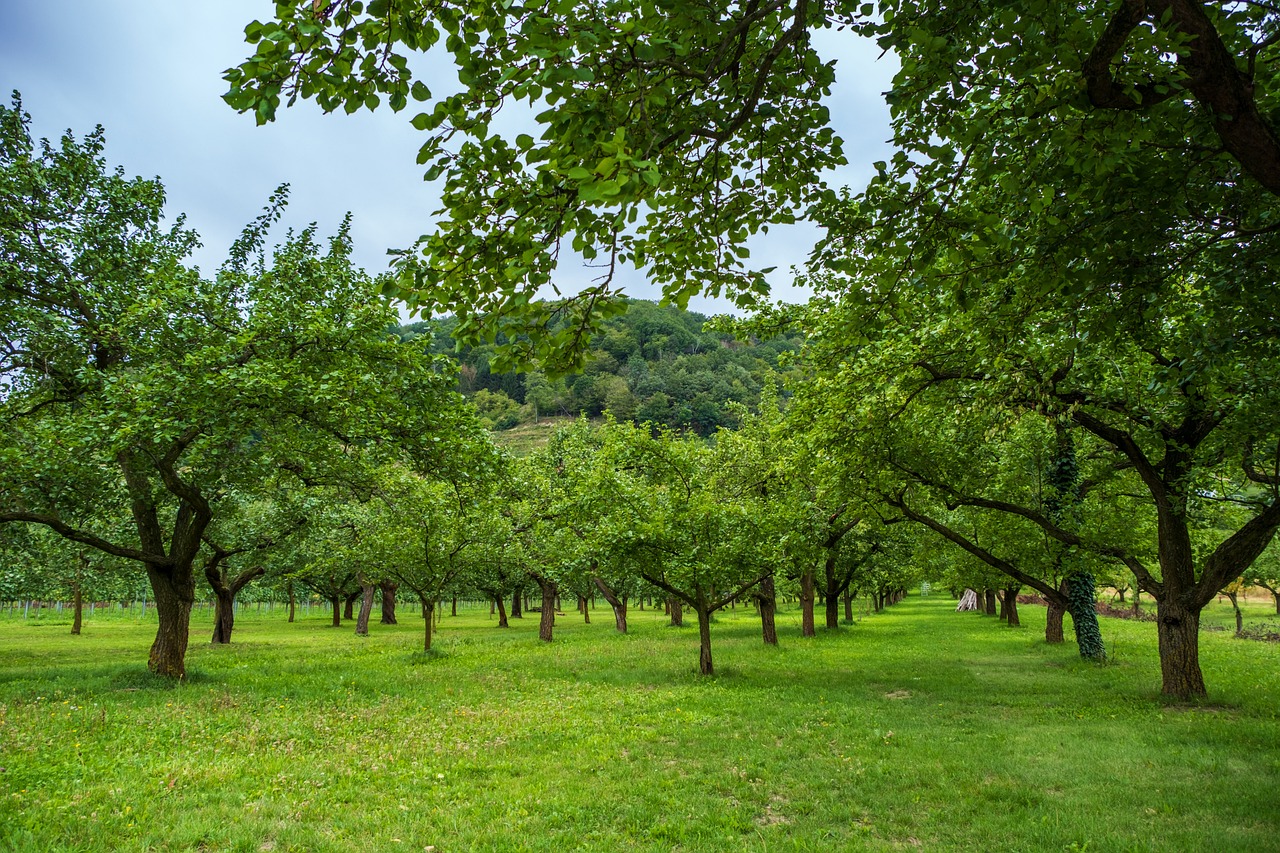Enhancing your front yard’s appearance can significantly boost your home’s curb appeal. Among the many landscaping choices available, small trees stand out as a stylish and functional option. They bring color, texture, and life to your outdoor space without overwhelming it. Whether you’re looking to define your entryway or create a welcoming atmosphere, selecting the right small trees is essential.
Small trees are defined as those that typically grow to a height of 15 to 30 feet. They are perfect for front yards, especially in urban settings where space is limited. Their manageable size allows homeowners to enjoy the benefits of trees without the challenges associated with larger varieties. Additionally, small trees can provide shade, improve air quality, and even contribute to energy savings by reducing heating and cooling costs.

When choosing small trees for your front yard, consider factors such as climate, soil type, and the overall aesthetic you wish to achieve. Some trees offer beautiful blooms, while others showcase striking foliage or interesting bark textures. Below is a table highlighting some popular small trees, their average height, and their key features:
| Tree Name | Average Height | Key Features |
|---|---|---|
| Japanese Maple | 10-15 feet | Vibrant fall color, delicate leaves |
| Crape Myrtle | 10-20 feet | Summer blooms, attractive bark |
| Redbud | 20-30 feet | Pink flowers in spring, heart-shaped leaves |
| Dogwood | 15-30 feet | Showy flowers, beautiful autumn color |
| Serviceberry | 15-25 feet | Edible berries, stunning spring blossoms |
Benefits of Small Trees in Your Front Yard
Integrating small trees into your front yard landscaping offers numerous advantages. Firstly, they create an inviting atmosphere for guests and passersby. A well-placed tree can serve as a focal point, drawing attention to your home’s entrance.
Moreover, small trees can provide privacy without the overwhelming presence of larger trees or tall shrubs. Placing a small tree near a window can filter views while still allowing natural light to enter your home. This balance of privacy and brightness enhances your living environment.
Environmental benefits also play a significant role in the appeal of small trees. They contribute to improved air quality by absorbing carbon dioxide and releasing oxygen. Additionally, they can serve as habitats for various wildlife species, promoting biodiversity in urban areas.
Furthermore, small trees can help with stormwater management. Their roots absorb excess rainwater, reducing runoff and erosion. This natural filtration system can be particularly beneficial in areas prone to flooding or heavy rain.
When planning your front yard design, it is vital to consider the spacing of small trees. Proper placement ensures that they have enough room to grow without competing with other plants or structures. As a general guideline, small trees should be planted at least 3 to 5 feet away from sidewalks and driveways to allow for adequate growth and maintenance.
In summary, choosing small trees for your front yard is not only about aesthetics; it is also about creating a sustainable and welcoming environment. With the right selection and placement, these trees can transform your outdoor space into a vibrant and appealing landscape.
Choosing the Right Small Trees for Your Front Yard
When selecting small trees for your front yard, it is crucial to consider several factors that will ensure both beauty and practicality. Understanding the specific characteristics of each tree type can help you make informed decisions that suit your landscape and lifestyle.
Climate Considerations
Your local climate plays a significant role in determining which trees will thrive in your front yard. Different species have varying tolerances to temperature, humidity, and drought. Here are some points to keep in mind:
- Hardiness Zones: Research your area’s hardiness zone. This classification indicates which plants can survive the local climate.
- Temperature Extremes: Consider both summer heat and winter cold. Some trees may struggle in extreme conditions.
- Precipitation: Assess the average rainfall. Trees that require more water may not do well in drier regions.
Soil Type and Quality
The soil in your front yard greatly influences the health of your chosen trees. Conduct a soil test to determine its composition and pH level. Here are some soil-related tips:
- Drainage: Ensure that the soil drains well. Poor drainage can lead to root rot.
- Nutrient Content: Enrich your soil with organic matter if it lacks nutrients.
- Compaction: Loosen compacted soil to promote healthy root growth.
Aesthetic Appeal and Design
The visual impact of small trees in your front yard is significant. You can choose trees based on various aesthetic factors:
- Foliage Color: Select trees with vibrant leaves that change color with the seasons.
- Flowering: Consider trees that produce beautiful flowers, adding color and fragrance to your yard.
- Bark Texture: Interesting bark can add visual appeal, especially in winter when leaves are absent.
Popular Small Trees for Front Yards

Here are some popular small trees that are well-suited for front yards, along with their characteristics:
| Tree Type | Height | Sunlight Requirements | Notable Features |
|---|---|---|---|
| Japanese Maple | 10-15 feet | Partial shade to full sun | Elegant leaf shape, stunning fall colors |
| Crape Myrtle | 10-20 feet | Full sun | Long-lasting summer blooms, attractive bark |
| Flowering Dogwood | 15-30 feet | Partial shade | Beautiful white or pink flowers, red berries in fall |
| Redbud | 20-30 feet | Full sun to partial shade | Pink flowers in early spring, heart-shaped leaves |
| Sour Cherry | 10-20 feet | Full sun | Edible fruit, lovely spring blossoms |
By understanding these essential factors and exploring various tree options, you can create a front yard that not only enhances your home’s curb appeal but also reflects your personal style and environmental considerations. Investing time in research will pay off when you see your chosen small trees thriving in their new home.

Planting and Caring for Small Trees

Once you have selected the ideal small trees for your front yard, the next step is to ensure proper planting and care. A healthy tree requires attention to its planting location, watering needs, and ongoing maintenance. Understanding these aspects will help your trees flourish and contribute positively to your landscape.
Planting Techniques
Planting a tree correctly is vital for its long-term health. Below are some key steps to follow when planting small trees:
- Choose the Right Time: The best time to plant small trees is during the early spring or fall when temperatures are moderate.
- Prepare the Site: Clear the area of any grass, weeds, or debris. This ensures that the tree has a clean environment to grow.
- Dug a Proper Hole: Dig a hole that is twice as wide as the root ball but no deeper than the height of the root ball itself. This allows roots to spread easily.
- Check for Roots: Inspect the roots before planting. If they are tightly bound, gently loosen them to encourage growth.
- Position the Tree: Place the tree in the center of the hole and ensure that it is straight. The top of the root ball should be level with the ground surface.
- Fill and Water: Backfill the hole with soil, pressing lightly to eliminate air pockets. Water the tree thoroughly after planting.
Watering and Fertilization
After planting, proper watering and fertilization are crucial for establishing a healthy tree. Here are some guidelines:
- Watering: Water your new tree deeply at least once a week during dry periods. Young trees require consistent moisture to develop strong roots.
- Mulching: Apply a layer of mulch around the base of the tree. This helps retain moisture, suppress weeds, and regulate soil temperature.
- Fertilization: Use a balanced fertilizer in early spring if your soil test indicates nutrient deficiencies. Follow the recommended application rates based on the tree type and size.
Pest and Disease Management
Monitoring your small trees for pests and diseases is essential for their health. Here are some common issues to watch for:
- Pests: Aphids, scale insects, and spider mites can harm trees. Regularly inspect leaves and branches for signs of infestation.
- Diseases: Fungal infections such as powdery mildew or root rot can affect tree health. Ensure good air circulation and avoid overwatering to minimize risks.
- Prevention: Implement preventative measures such as using organic pesticides or introducing beneficial insects that prey on harmful pests.
Seasonal Care Practices
Caring for small trees involves seasonal practices that promote growth and vitality throughout the year. These practices include:
Spring Care
In spring, focus on preparing your trees for the growing season:
- Pruning: Trim any dead or damaged branches to encourage healthy growth.
- Fertilizing: Apply fertilizer as needed based on soil tests.
- Pest Inspection: Check for any signs of pests or diseases as trees begin to leaf out.
Summer Care
During the summer months, maintain hydration and monitor tree health:
- Irrigation: Ensure consistent watering, especially during heatwaves.
- Weed Control: Keep the area around your tree free from weeds that compete for nutrients.
Fall Care
As fall approaches, prepare your trees for winter:
- Mulching: Add mulch to protect roots from freezing temperatures.
- Final Pruning: Conduct any necessary pruning before winter dormancy.
wInter Care
In winter, protect your trees from harsh conditions:
- Watering: Continue to water during dry spells, as roots can still become dehydrated.
- Wrap Trunks: For vulnerable species, wrap trunks with protective material to prevent damage from frost or animal feeding.
Caring for your small trees with attention to detail will ensure they thrive in your front yard, enhancing both beauty and value over time.
Enhancing Curb Appeal with Small Trees
Small trees can dramatically transform the appearance of your front yard, making it more inviting and aesthetically pleasing. Their ability to add dimension and character cannot be overstated. When selected and cared for properly, these trees not only enhance beauty but also contribute to the overall environment.
One important aspect to consider is the placement of your trees. Positioning them strategically can highlight architectural features of your home and create a sense of balance in the landscape. For instance, placing a flowering dogwood near the front entrance can draw the eye and create a welcoming focal point. Additionally, using small trees to frame walkways or driveways can lead visitors through your yard in a visually appealing manner.
Creating Seasonal Interest
Small trees can provide year-round interest in your front yard. Different species offer variations in color, texture, and form throughout the seasons. Here are some ways to create seasonal appeal:
- Spring Bloomers: Trees like redbud and flowering dogwood burst into bloom early in the season, providing stunning floral displays.
- Summer Foliage: Trees such as crape myrtle offer vibrant summer blooms and lush green leaves that provide shade and beauty.
- Autumn Color: Japanese maples are known for their brilliant fall hues, adding warmth and richness to your landscape.
- Winter Structure: Some trees, like serviceberry, have attractive bark or interesting shapes that stand out against a winter backdrop.
Environmental Benefits of Small Trees
Beyond aesthetics, small trees make significant contributions to the environment. They play a vital role in urban ecosystems by improving air quality and reducing pollution. Here are some of the environmental benefits:
- Carbon Sequestration: Trees absorb carbon dioxide from the atmosphere, helping combat climate change.
- Habitat Creation: Small trees provide homes for various birds and beneficial insects, supporting biodiversity.
- Soil Erosion Prevention: Tree roots help stabilize soil, reducing erosion and promoting healthier landscapes.
Incorporating small trees into your front yard design contributes not only to personal enjoyment but also to community and environmental health.
Final Thoughts
Selecting small trees for your front yard is an excellent way to enhance curb appeal while providing numerous benefits. These trees create beauty, charm, and interest throughout the seasons. With proper planning, planting techniques, and ongoing care, you can ensure that your small trees thrive, transforming your outdoor space into a vibrant and inviting area.
Remember to choose varieties that suit your local climate, soil conditions, and personal preferences. By doing so, you will create a stunning landscape that reflects your style while promoting ecological well-being. Small trees are indeed a valuable investment for any front yard, offering both immediate visual impact and long-term advantages.
As you embark on this journey of enhancing your front yard with small trees, keep in mind the joy they will bring to your home and community. Their beauty will be a lasting reminder of nature’s elegance, enriching your living environment for years to come.
